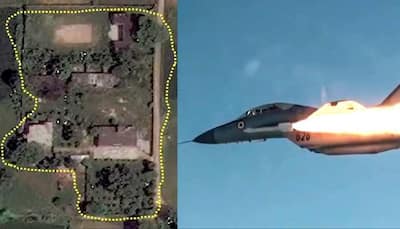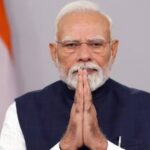China gave Pakistan vital satellite and air defence assistance in its recent war-like confrontation with India, a senior Indian defence think tank asserted, hinting Beijing might have had a more active role in the conflict than officially stated. China helped Pakistan realign satellite surveillance over Indian space and redeploy air defence radar systems in the period before the war that followed the April 22 killing of 26 Indian tourists, Ashok Kumar, the Director General of the Centre for Joint Warfare Studies (CENJOWS)—a think tank attached to India’s Ministry of Defence — said.
“It helped them to redeploy their air defence radar so that any aerial action from our side could be detected,” Kumar told an interview at the headquarters of the think tank in New Delhi. Support was said to have been given in conjunction with an ISIS-affiliated terror assault that ignited the escalation between the nuclear-armed neighbours.
Though the Indian government has yet to officially declare China’s role, and Pakistan has acknowledged that it used Chinese weapons systems, Kumar’s words signal wider logistical and intelligence collaboration between Beijing and Islamabad during the conflict.
CENJOWS is a research think-tank aimed at modernizing India’s military strength. It has Defence Minister Rajnath Singh and the heads of India’s Army, Navy, and Air Force on its advisory board.
Requests for comment sent to the Foreign and Defence Ministries of China, India, and Pakistan, as well as to the Indian Armed Forces and the Office of Prime Minister Narendra Modi, remained unanswered as of Sunday evening.
The recent skirmish has been termed the most intense between India and Pakistan in half a century, with drone attacks, artillery exchanges, missile exchanges, and small-arms battles along their disputed border areas. India has designated the April 22 killings as a Pakistan-sponsored terrorist act — a charge Islamabad has refuted.
Ex-US President Donald Trump alleged to have brokered a ceasefire from May 10, something India dismissed as saying the truce was negotiated bilaterally. Pakistan subsequently extended the ceasefire until Sunday, while India said that it was seeking confidence-building measures.
Kumar also pointed out that Chinese military systems deployed during the war “failed miserably” in actual battlefield situations. Though he did not explain, he quoted Indian military officials raising questions about the functioning of the systems.
Pakistan had used hundreds of drones in the war, reportedly, but India’s networked sensor system helped it effectively counter the threat, said Kumar.
Pakistan said on Friday that it had downed six Indian fighter aircraft. The statement hasn’t been independently confirmed, and no losses have been verified by India.
Chinese hardware like the J-IOC combat fighter and the PL-15 air-to-air missile have been used for the first time in actual combat, according to reports. Their employment has caused a stir in regional defence communities, especially in Taiwan. Neither China nor Pakistan made any official assessment of their performance or public statements regarding the contribution of the systems to the war.
Kumar cautioned that future defence planning in India would have to increasingly factor in the likelihood of concurrent aggression by both China and Pakistan. “Anything which is with China today can be deemed to be with Pakistan tomorrow,” he stated, further observing that China is not likely to act unless a conflict reaches a “critical” point.
He also suggested Pakistan could be expected to support China in the case of a future India-China conflict.
China and Pakistan have enjoyed close strategic and military relations since the Cold War. Beijing has invested heavily in Pakistan through the Belt and Road Initiative, including in the strategic China-Pakistan Economic Corridor (CPEC).
After a fatal 2020 border skirmish with China that killed 20 Indian troops, India has continued to gradually redeploy military resources to bolster its northern border. In spite of a recent improvement in relations over the past several months, the new conflict highlights intensifying strategic tensions in the area.
Stay informed on all the , real-time updates, and follow all the important headlines in and on Zee News.








